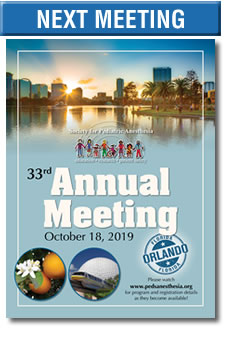SPA Meeting Reviews
Friday Session V: Burnout is Real: Practical Strategies for Identification and Intervention
Reviewed by Lisa Wise-Faberowski, MD, MS, FAAP
Stanford University
Physicians experiencing burnout are more likely than peers to reduce their work hours or exit their profession. Burnout is exemplified as emotional exhaustion, depersonalization and a diminished sense of accomplishment. Annually, 400 physicians take their own lives each year related to high rates of depression and substance abuse. Male anesthesiologists are the highest risk group for suicide.
Only 25% of anesthesiologists are happy at work and 51% are happy out of work. Burnout was a greater factor (42%) than depression (18%) for level of happiness. Fifty percent of burnout is linked to lack of respect from administrators, employers, colleagues or staff. Thirty percent suffered from lack of control/autonomy. Most (50%) use exercise to deal with their level of burnout whereas others use less productive and more destructive ways of dealing with burnout (isolationism, eating or drinking alcohol). The majority of anesthesiologists (64%) who have either felt burnout or suicidal thoughts do not seek help.
Stanford University offers a wellness program “Be Well” for all Stanford employees www.bewell.stanford.edu. “WellMD” is program specific for physicians www.wellmd.stanford.edu. The program was initiated by Dr. Mickey Trockel, a clinical associate professor in psychiatry and behavioral science. In 2017 Dr. Tait Shanafelt from the Mayo Clinic became the first chief wellness officer. Stanford was the first academic medical center in the country to have a chief wellness officer.
The session ended in breakout wellness sessions led by Dr. Sean Flack.






